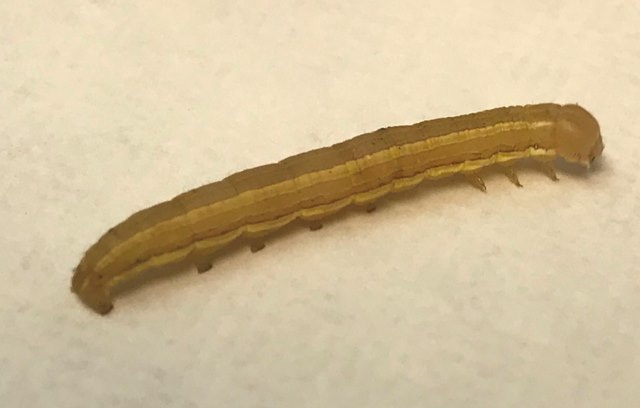Manitoba Insect & Disease Update
Issue 13: August 22, 2018
Summary
Diseases: From the canola disease survey low to high levels of blackleg infection were observed, dependent on location, rotation and variety. Sclerotinia and alternaria pod spot infection is lower this year, following a dry summer.
Insects: Grasshopper populations continue to be monitored in susceptible crops in some areas. A canola field in the Central region was treated with insecticide due to high grasshopper levels. There has been some spraying for bertha armyworm in the Swan River area in the past few weeks, but it is starting to wind down. Flea beetles are accumulating in some of the later seeded canola fields. Spider mite levels continue to be monitored in some soybean fields, particularly around field edges.
Spider Mites
A reminder that the stages of soybeans that are most susceptible to spider mites are the R4 (full pod) through R5 (beginning seed – when seeds are filling) stages. Once the soybeans reach R6 (full seed or green bean stage) the feeding from spider mites will have less impact on yield.
Pyrethroid insecticides and spider mites: One of the questions that came in this week was why some synthetic pyrethroid insecticides can cause a resurgence in spider mites. There has been a lot of research on this. The following is from a review in Experimental & Applied Acarology (1989, Volume 6, pp 29–46):
Resurgences may be seen as soon as 1 week, or even as late as a whole season, post-treatment. Synthetic pyrethroids are lethal as well as repellent to phytoseiids and other predators that prey on spider mites, may inhibit fungi which attack the latter, and affect phytophagous competitors. Spider mites are repelled by synthetic pyrethroids, thus becoming more evenly distributed and less web-restricted, with a resultant increase in fecundity. Spider-mite development is shortened due to synthetic pyrethroids and the sex ratio becomes more female-biased; onset of winter diapause also seems to be delayed. Synthetic pyrethroids appear to sensitize to spider-mite infestation plants which have not hitherto been attacked.
Late-season flea beetles in Canola
As canola matures and is harvested, the species of flea beetles that feed on canola are moving around looking for other cruciferous plants to feed on. Levels can get quite high in some canola fields, particularly patches of greener crop. Levels may not be even across a field.
A study was done at Agriculture and Agri-Food Canada in Saskatoon to determine how economical these late-season populations they could be. The study concluded that:
Flea beetle feeding on canola in late-summer is rarely an economic concern. Flea beetle feeding that occurs when seeds in lower pods of canola are at the green stage or beyond is unlikely to affect seed yields regardless of the infestation rate of flea beetles. Even when seeds are translucent to green, numbers higher than 100 flea beetles per plant, and for some cultivars higher than 350 per plant, may be necessary to cause significant yield reductions (Soroka and Grenkow. Can. J. Plant Sci. 2012: 97-107).
Flea beetle feeding on canola in late-summer is rarely an economic concern. Flea beetle feeding that occurs when seeds in lower pods of canola are at the green stage or beyond is unlikely to affect seed yields regardless of the infestation rate of flea beetles. Even when seeds are translucent to green, numbers higher than 100 flea beetles per plant, and for some cultivars higher than 350 per plant, may be necessary to cause significant yield reductions (Soroka and Grenkow. Can. J. Plant Sci. 2012: 97-107).
So in most instances controlling these late-season flea beetle populations is not going to be economical.
Insect Monitoring Programs
Grasshopper Survey: A reminder for those participating in the grasshopper survey, that counts are done during August, when the majority of grasshoppers are in the adult stage.
Agronomists and farmers who would also be interested in estimating grasshopper numbers in or around the fields they are in and have this information included in the survey are encouraged to see the survey protocol for more details of the survey and where to send data. Estimates of grasshopper levels can be collected during regular farm visits. Data from the survey, along with weather data during the egg laying period of the grasshoppers, is used to produce a forecast for 2018.
The protocol and data sheet for the grasshopper survey is at: http://www.gov.mb.ca/agriculture/crops/insects/mb-grasshopper-survey.html
The protocol and data sheet for the grasshopper survey is at: http://www.gov.mb.ca/agriculture/crops/insects/mb-grasshopper-survey.html
Insect Identification Quiz
Some of these caterpillars were found on equipment after harvesting a wheat field. What are they? Hint - they can sometimes be found on wheat heads, and are in the same family of insects as armyworms.

Photo by Leanne Tibbatts - Manitoba Agriculture
Answer: These are called wheat head armyworm (Faronta diffusa). Larvae of wheat head armyworms will feed right in the heads, but are generally not considered a significant pest of wheat. Although they can be found on many grass species, wheat is the preferred host. Populations are usually concentrated around field margins.
----------------------------------------------------------------------------------------------------------------------
Compiled by:
John Gavloski, Entomologist Holly Derksen, Field Crop Pathologist
Manitoba Agriculture Manitoba Agriculture
Phone: (204) 750-0594 Phone: (204) 750-4248
To report observations on insects or plant pathogens that may be of interest or importance to farmers and agronomists in Manitoba, please send messages to the above contacts.
To be placed on an E-mail list so you will be notified immediately when new Manitoba Insect and Disease Updates are posted, please contact John Gavloski at the address or numbers listed above.

